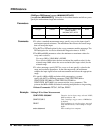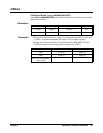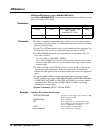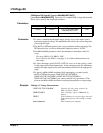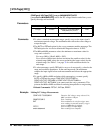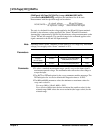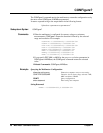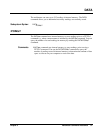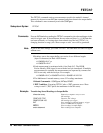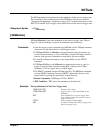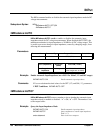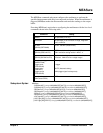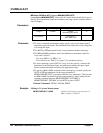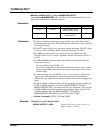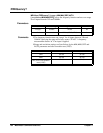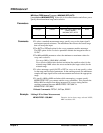
98 Multimeter Command Reference Chapter 3
FETCh?
The FETCh? command retrieves measurements stored in the module’s internal
memory by the most recent
INITiate command and places them in the output buffer.
This command is most commonly used with
CONFigure.
Subsystem Syntax FETCh?
Comments Execute INITiate before sending the FETCh? command to place the multimeter in the
wait-for-trigger state. If the multimeter has not taken any data (i.e., if
INITiate has
not been executed), or if settings have been altered since the last
FETCh? (i.e.,
changing function or range), the “Data corrupt or stale” error will be generated.
Note If you do not alter settings, you could “FETCh?” the same data over and over again
without error.
• Readings sent to the output buffer can consist of two different lengths
(bytes or characters) in Real ASCII format:
±
1.23456E
±
12
LF
or
±
1.234567E
±
12
LF
• Each measurement is terminated with a Line Feed (LF). The HP-IB
End-or-Identify (EOI) signal is sent with the last byte transferred. If multiple
measurements are returned, the measurements are separated by commas and
EOI is sent only with the last byte. For example:
±
1.23456E
±
12
LF
,
±
1.234567E
±
12
LF
,
±
1.23456E
±
12
LF EOI
• The Multimeter’s internal memory stores 512 readings maximum.
• Related Commands: CONFigure, INITiate, READ?
• *RST Condition: Executing FETCh? after a *RST generates error “Data
corrupt or stale” (
*RST places the multimeter in the idle state).
Example Transferring Stored Readings to Output Buffer
dimension array
Dimension computer array to store
100 readings.
CONF:VOLT:DC
Function: DC voltage.
SAMP:COUN 100
100 readings per trigger.
INIT
Store readings in internal memory; trigger
source is IMMediate by default.
FETC?
Place readings in output buffer.
enter statement
Enter readings into computer.



